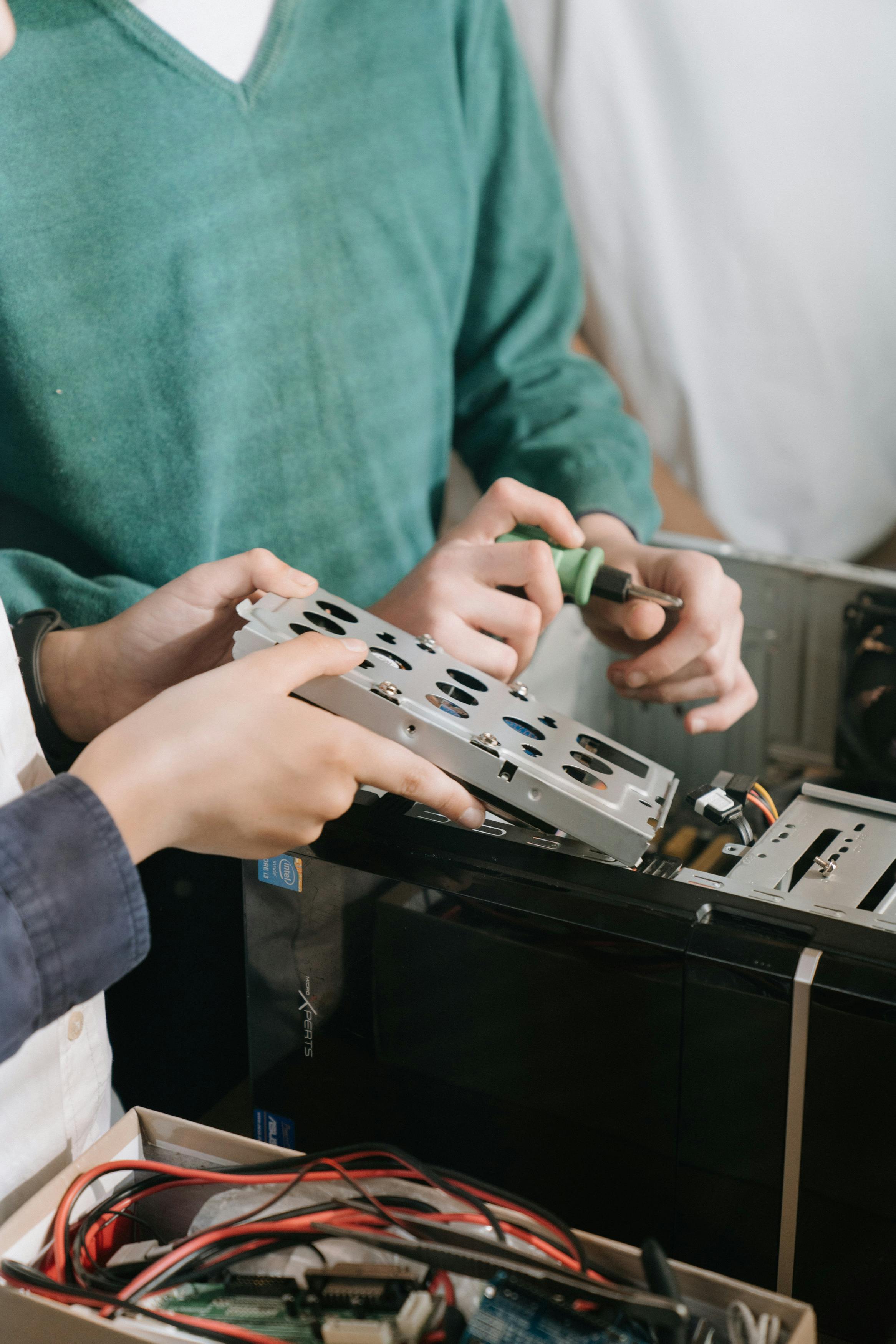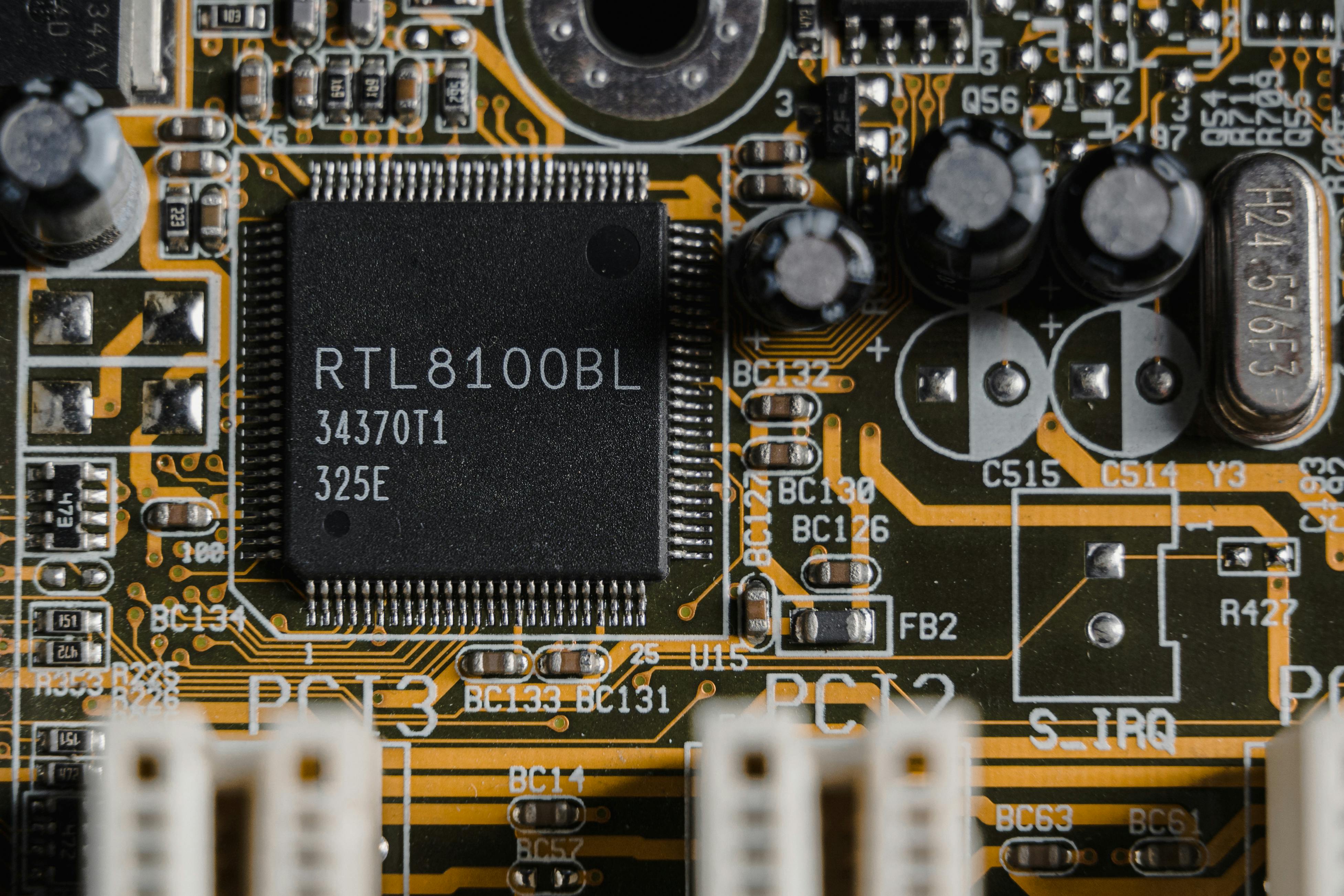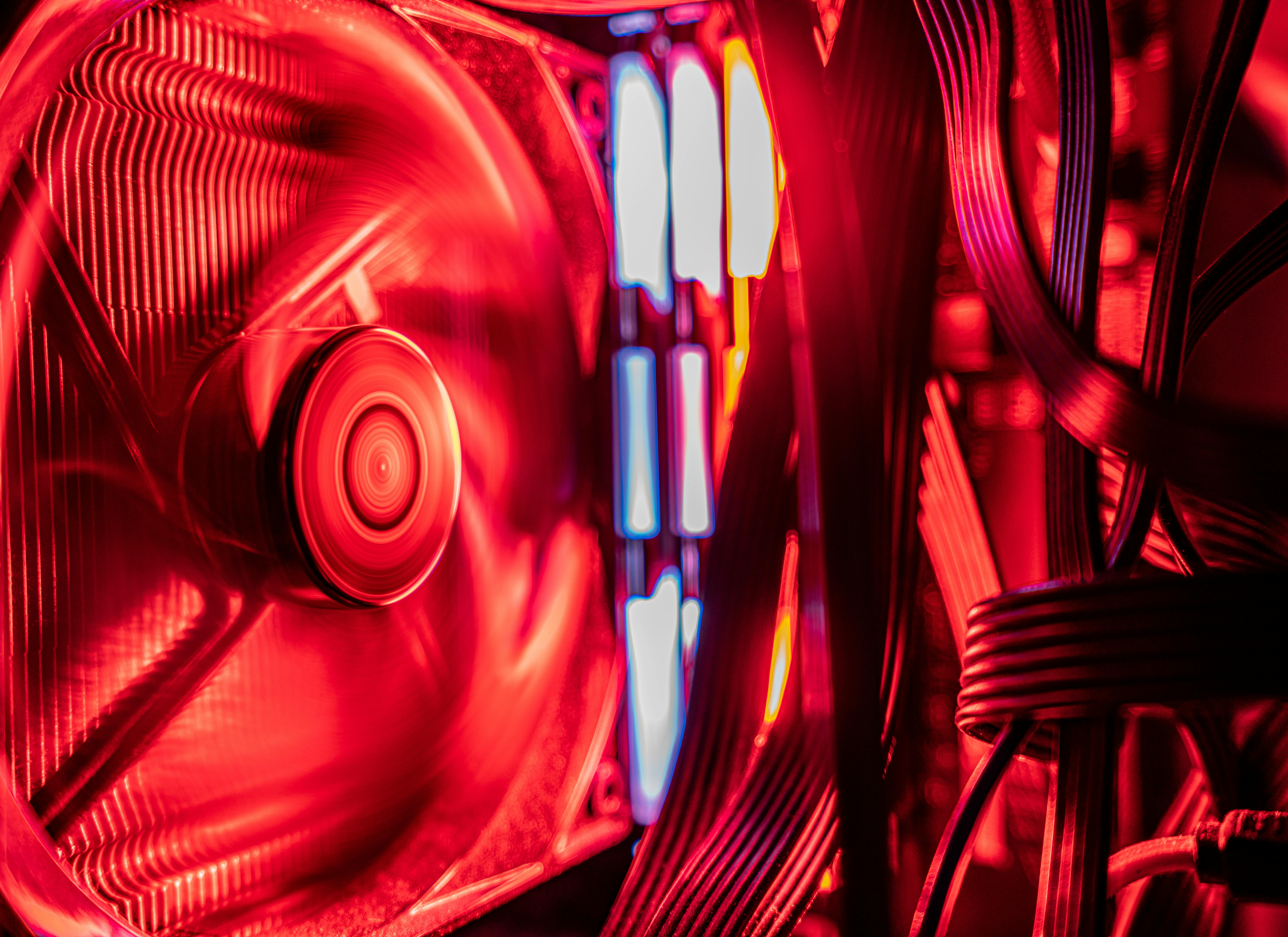Are you frustrated by Windows 11 CPU throttling issues that seem to hold back your PC’s performance? You’re not alone! Many users are experiencing this problem, leading to sluggish performance and an overall lackluster computing experience. In this article, we will dive deep into effective Windows 11 CPU throttling solutions that can help you unlock your PC’s full potential. With the right strategies and tweaks, you can ensure your system runs smoothly and efficiently, allowing you to tackle demanding applications and games without a hitch.
In today’s fast-paced digital world, having a powerful computer is a must. But what happens when your CPU doesn’t perform as it should? Windows 11 has introduced some amazing features, yet some users are noticing that their systems are not reaching optimal speeds due to thermal throttling or other CPU limitations. This can be particularly frustrating for gamers, content creators, and professionals who rely on top-notch performance. So, how do you combat this issue? By understanding the common causes of CPU throttling and implementing the right solutions, you can significantly enhance your system’s performance.
In the following sections, we will explore practical tips and tools to diagnose and fix Windows 11 CPU throttling issues. From adjusting power settings to optimizing cooling solutions, these strategies will empower you to fully utilize your hardware. Ready to transform your computing experience? Let’s get started on the path to a faster, more responsive Windows 11 setup!
10 Proven Techniques to Mitigate Windows 11 CPU Throttling and Boost Performance

Windows 11 has brought many exciting features but also some challenges, like CPU throttling, which can slow down your system. CPU throttling occurs when the processor reduces its speed due to overheating or power limitations, causing performance issues. But don’t worry! There’s plenty of techniques you can try to mitigate this problem and boost your performance. Here’s a breakdown of 10 proven techniques to help you unlock your PC’s full potential.
1. Keep Your System Cool
Heat is one of the biggest enemies of CPU performance. Make sure your computer’s vents are clean and free from dust. Using compressed air to clean out dust from fans, heatsinks, and other components can help a lot. Also, consider using a cooling pad if you’re using a laptop.
2. Update Drivers Regularly
Outdated drivers can cause various issues including throttling. It’s important to check for updates on your graphics and chipset drivers regularly. Often, manufacturers release updates that improve performance and stability. You can do this through Device Manager or the manufacturer’s website.
3. Adjust Power Settings
Windows 11 includes power settings that can impact performance. Go to the Power & Battery section in Settings and select the “High performance” plan. This will allow your CPU to run at higher speeds, reducing the chances of throttling during intensive tasks.
4. Disable Background Apps
Sometimes, too many apps running in the background can hog CPU resources. You can disable unnecessary startup programs by using Task Manager. Just right-click the taskbar, select Task Manager, and manage the startup tab. Keep only the essential apps enabled.
5. Monitor CPU Usage
Using tools like Task Manager or Resource Monitor can give you a clear picture of what’s using your CPU power. Identify any programs that are excessively consuming CPU resources and consider closing or uninstalling them if they’re not needed.
6. Perform Regular Maintenance
Regularly updating and cleaning your system can help too. Disk cleanup and defragmentation can be beneficial, especially if you have an HDD. Use built-in tools like Disk Cleanup or Third-party software to streamline this process.
7. Upgrade Your Hardware
If your CPU is consistently throttling, it might be time to consider hardware upgrades. Adding more RAM or switching to an SSD can significantly improve performance and reduce CPU strain. Sometimes a new cooling solution can also help keep temperatures down.
8. Adjust BIOS Settings
Sometimes, BIOS settings can limit CPU performance. Accessing the BIOS and tweaking settings like CPU voltage or enabling Turbo Boost can lead to improvements. However, be cautious, as incorrect settings can cause instability.
9. Use Performance Monitoring Software
There are plenty of performance monitoring tools available that can help track CPU temperatures and performance in real-time. Using software like HWMonitor or MSI Afterburner can help you keep an eye on your CPU and adjust settings accordingly.
10. Reinstall Windows
As a last resort, if all else fails and your system still struggles, consider reinstalling Windows 11. Sometimes, accumulated bloatware and system errors can lead to throttling issues. A clean installation can help restore system performance.
By implementing these Windows 11 CPU throttling solutions, you can significantly enhance your computer’s performance. Each technique can contribute to unlocking your PC’s full potential, making your experience smoother and more enjoyable. Remember, regular maintenance and being proactive can go a long way in preventing future issues. Don’t let CPU throttling hold you back; take action today!
Is Your Windows 11 PC Slowing Down? Discover the Top 5 CPU Throttling Fixes

Are you feeling like your Windows 11 PC slowing down? You’re not alone. Many users experience lagging and performance issues, and it often links back to CPU throttling. This is when the processor reduces its speed to prevent overheating or conserve power, which is not good for performance. Thankfully, there’s a way to combat this. Let’s take a deep dive into the top five CPU throttling fixes. You can unlock your PC’s full potential with these Windows 11 CPU throttling solutions.
1. Check Background Processes
Sometimes, background processes uses too much CPU and slows everything down. To see what’s running, you can press Ctrl + Shift + Esc to open the Task Manager. Here, you can identify any unnecessary applications consuming your CPU resources. If you find any, you can right-click them and select “End Task.” This simple step can help free up CPU resources and speed up your system again.
2. Update Your Drivers
Outdated drivers can cause all sorts of issues, including CPU throttling. It’s important to keep drivers up-to-date. Windows 11 usually does this automatically, but sometimes it misses important updates. You can manually check for updates by going to Device Manager. Right-click on your device, select “Update Driver,” and follow the prompts. Keeping your drivers fresh can significantly improve performance.
3. Adjust Power Settings
Windows 11 has different power plans, and they affect your CPU’s performance. If you’re using a power-saving mode, switching to “High performance” can help. You can find this option in Settings > System > Power & battery. Look for “Additional power settings” and choose the high performance plan. This allows your CPU to run at its full potential, especially during demanding tasks.
4. Disable CPU Throttling in BIOS
For advanced users, disabling CPU throttling in BIOS can be a solution. This method is not for the faint of heart, and you should be careful. To access BIOS, restart your PC and usually press a key like F2 or Del right after the boot screen appears. Once in BIOS, look for settings related to CPU performance or speed and adjust them accordingly. Remember, this can void warranties or cause instability, so proceed with caution!
5. Clean Up Your System
A cluttered system can also lead to performance issues. Regularly cleaning up your hard drive can help. You can use the built-in Disk Cleanup tool by searching for it in the Start menu. This tool can delete temporary files, system files, and other unnecessary data. Additionally, consider uninstalling programs that you do not use anymore. Less clutter means better performance for your Windows 11 PC.
Practical Example of CPU Throttling Solutions
Let’s say you’re a gamer, and your Windows 11 PC is lagging during intense gameplay. By following the steps outlined above, you might notice improvements. First, check what background processes are running. Next, make sure your graphics driver is up-to-date. Adjust your power settings to high performance and consider cleaning up your system. You might even feel brave and explore BIOS settings if nothing else works. Simple changes can lead to better gaming experiences.
In summary, if your Windows 11 PC is slowing down, it’s essential to diagnose the issue. CPU throttling is a common culprit, but with these top five fixes, you can potentially unlock your PC’s full potential. From checking background processes to updating drivers, these solutions are easy to apply and can lead to noticeable improvements. Don’t let a sluggish system hold you back; take action today and speed things up!
How to Optimize Windows 11 Settings for Maximum CPU Performance: A Step-by-Step Guide

Are you looking to unlock the full potential of your Windows 11 device? Many users experience issues with CPU performance, often without realizing it. If your computer feels sluggish or unresponsive, it might be due to CPU throttling. In this article, we’ll go through how to optimize Windows 11 settings for maximum CPU performance. You can follow these steps to ensure your PC runs smoothly and efficiently.
Understanding CPU Throttling
CPU throttling happens when your computer slows down its processing speed to prevent overheating or conserve power. This can be frustrating, especially when you need maximum performance for gaming or resource-heavy tasks. Windows 11 offers various features that can help mitigate this issue.
Basic Performance Adjustments
First, let’s dive into some basic settings you can tweak.
-
Power Plan Settings:
- Right-click on the battery icon in the taskbar.
- Click on “Power Options.”
- Select “High Performance” to boost your CPU output.
-
Game Mode:
- Go to Settings > Gaming > Game Mode.
- Turn on Game Mode; this prioritizes your game applications and optimizes system resources.
Advanced CPU Settings
Once you’ve handled the basics, it’s time to dig deeper into advanced settings.
-
Adjusting Processor Scheduling:
- Right-click on the Start button and select “System.”
- Click “Advanced system settings.”
- Under the Performance section, click “Settings.”
- In the Performance Options window, select the “Advanced” tab and check “Programs” under Processor scheduling.
-
Disabling Background Apps:
- Navigate to Settings > Privacy > Background apps.
- Disable apps that you do not use frequently. This can free up CPU resources.
Windows 11 CPU Throttling Solutions
If you’re still facing throttling issues, there are additional solutions to explore.
-
Update Drivers: Outdated drivers can lead to poor performance. Make sure to regularly check for updates for your CPU and GPU drivers.
-
BIOS Settings:
- Sometimes, CPU throttling is controlled at the BIOS level.
- Restart your computer and enter the BIOS setup (usually by pressing F2 or Delete during boot). Look for settings related to CPU performance and power management.
Monitoring CPU Performance
To truly optimize, you must monitor your CPU’s performance.
-
Task Manager:
- Right-click on the taskbar and select “Task Manager.”
- You can see which processes are consuming your CPU resources.
-
Performance Monitor:
- Type “Performance Monitor” in the Start menu search.
- This tool provides detailed insights on CPU usage and performance.
Final Thoughts
By following these steps, you can significantly improve CPU performance on your Windows 11 machine. Adjusting the right settings and being mindful of background processes can make a world of difference. Whether you’re gaming, working, or just browsing, unlocking your PC’s full potential is possible with the right tweaks. Don’t forget to keep your system updated and regularly check your performance metrics to ensure your PC is running at its best. With the right approach, you can eliminate CPU throttling issues and experience a smoother, more responsive computing experience.
The Ultimate Checklist: 7 Essential Tools to Combat CPU Throttling in Windows 11

Are you tired of your Windows 11 system slowing down just when you need it the most? CPU throttling can be a real pain, making tasks drag on longer than they should. But don’t worry! We’ve compiled The Ultimate Checklist: 7 Essential Tools to Combat CPU Throttling in Windows 11. These solutions are here to help you unlock your PC’s full potential. Let’s dive into the tools that can help you take control!
1. Task Manager
First on our list, Task Manager is a built-in feature in Windows. It’s pretty easy to access by pressing Ctrl + Shift + Esc. You can see which apps using the most CPU. If you notice any unnecessary programs running, you can end them right away. This can instantly free up CPU resources.
2. Windows Power Settings
Windows 11 offers multiple power plans. You can switch to a high-performance plan. Just go to Settings, then System, and select Power & battery. This option might consume more energy, but it also boosts your CPU’s performance.
3. CPU-Z
Next up is CPU-Z, a handy tool for monitoring CPU performance. It gives you detailed information about your processor, including clock speeds and core usage. Knowing this data can help you identify if your CPU is indeed throttling or if it’s just a glitch.
4. MSI Afterburner
For those who like to overclock, MSI Afterburner is a powerful tool. It lets you control your GPU settings, which can indirectly affect your CPU performance. When the GPU is working efficiently, it can relieve some pressure off the CPU. Just be cautious with overclocking, as it can lead to overheating issues.
5. HWMonitor
Heat is a major enemy of performance. HWMonitor tracks your CPU temperature and can alert you if it’s running too hot. When your CPU overheats, it often throttles to prevent damage. Keeping an eye on temperatures can help you maintain optimal performance.
6. CCleaner
CCleaner is a utility that cleans out unnecessary files and optimizes your system. By removing junk files, it can improve performance and prevent CPU throttling. You can schedule regular cleanups, ensuring your system always runs smoothly.
7. Process Lasso
Last but not least, we have Process Lasso. This tool improves system responsiveness by managing CPU priorities and limits. It can prevent CPU from throttling by allowing you to set rules for how processes are handled. You can keep resource-heavy applications from hogging all CPU power.
Quick Tips for Preventing CPU Throttling
- Regularly update your Windows 11 to the latest version for improved performance.
- Keep your drivers updated, especially for your graphics card.
- Make sure your PC is dust-free to avoid overheating.
- Consider upgrading your cooling system if overheating is a constant issue.
With these Windows 11 CPU throttling solutions, you can take control of your system’s performance. Monitor your CPU, optimize your settings, and keep your hardware clean. With the right tools, you can unlock your PC’s full potential and enjoy a smoother experience. Each of these tools plays a unique role, and using them together can make a significant difference. Don’t let CPU throttling hold you back — equip yourself with these essential tools today!
CPU Throttling in Windows 11: What It Is and How to Overcome It for Ultimate Gaming Performance

CPU throttling in Windows 11 can be a gamer’s worst nightmare. You finally set up your dream rig, only to find that your CPU is not delivering the expected performance. This phenomenon, often referred to as thermal throttling, occurs when your processor reduces its clock speed to prevent overheating. In Windows 11, it can be particularly frustrating when you’re trying to get the most out of your gaming experience.
What Is CPU Throttling?
CPU throttling is a protective mechanism that slows down your CPU when it reaches a certain temperature threshold. It happens for several reasons, including:
- Overheating: Insufficient cooling, dust buildup, or malfunctioning fans can cause high temperatures.
- Power Limitations: Sometimes, power supply issues can limit the CPU’s ability to perform at full capacity.
- Poor Thermal Paste Application: If the thermal paste between the CPU and heatsink isn’t applied properly, heat transfer becomes inefficient.
When any of these factors occur, your CPU can throttle itself to maintain stability and avoid damage. This is where things can get tricky for gamers who want high-performance gaming without interruptions.
Signs of CPU Throttling
Recognizing CPU throttling can be essential for addressing performance issues. Some common signs include:
- Reduced Frame Rates: You might notice a drop in frames per second (FPS) during gameplay.
- Increased Load Times: Games may take longer to load, indicating reduced processing power.
- Higher CPU Temperatures: Monitoring tools may show elevated temperatures when gaming.
- System Crashes or Freezes: Extreme cases of throttling can lead to crashes or system instability.
Windows 11 CPU Throttling Solutions: Unlock Your PC’s Full Potential
If you want to overcome CPU throttling and get the ultimate gaming performance, there are several solutions you can try. Here’s a list of effective methods:
- Improve Cooling: Ensure your PC has adequate cooling solutions. Consider adding more fans, upgrading your CPU cooler or even cleaning dust from existing fans.
- Check Power Settings: In Windows 11, adjust your power settings to “High Performance.” This can prevent the CPU from throttling due to power limits.
- Clean Your PC: Dust can clog fans and heat sinks. Regular cleaning can significantly improve airflow and cooling efficiency.
- Update Drivers: Make sure your GPU and chipset drivers are up-to-date. Sometimes, outdated drivers can cause performance issues.
- Monitor Temperatures: Use software tools like HWMonitor or Core Temp to keep an eye on your CPU temperatures. If they climb too high, it’s time to address the cooling.
- Optimize Game Settings: Lowering in-game settings can help reduce CPU load, especially if your system is on the lower end of specs.
Comparing Solutions: Which Works Best?
Here’s a quick comparison of some common solutions to tackle CPU throttling:
| Solution | Effectiveness | Cost |
|---|---|---|
| Improve Cooling | High | Moderate |
| Check Power Settings | Moderate | Free |
| Clean Your PC | High | Free |
| Update Drivers | Moderate | Free |
| Monitor Temperatures | High | Free |
| Optimize Game Settings | Low | Free |
Additional Tips to Prevent Throttling
- Use Quality Thermal Paste: If you’re comfortable, reapply thermal paste to improve heat transfer.
- Consider Undervolting: This technique can help decrease temperatures without sacrificing performance.
- Adjust BIOS Settings: Sometimes tweaking settings related to CPU performance in the BIOS can help.
Being aware of CPU throttling in Windows 11 is crucial for gamers wanting to maximize their gaming experience. By implementing these Windows 11 CPU throttling solutions, you can unlock your PC’s full potential and enjoy smoother gameplay without interruptions. Remember, maintaining your hardware and monitoring performance can make all the difference in achieving that ultimate gaming performance.
Conclusion
In conclusion, addressing CPU throttling issues in Windows 11 is crucial for optimizing system performance and ensuring a seamless user experience. Throughout this article, we explored various solutions, including checking for thermal throttling, adjusting power settings, updating drivers, and utilizing performance-enhancing software. We also discussed the importance of maintaining adequate cooling and considering hardware upgrades if necessary. By implementing these strategies, users can significantly mitigate CPU throttling, leading to improved responsiveness and efficiency. As technology continues to evolve, staying informed about system performance and optimizing your setup is essential. We encourage you to assess your current configuration and take proactive steps to enhance your Windows 11 experience. Don’t let CPU throttling hold you back—take charge of your system’s performance today!

